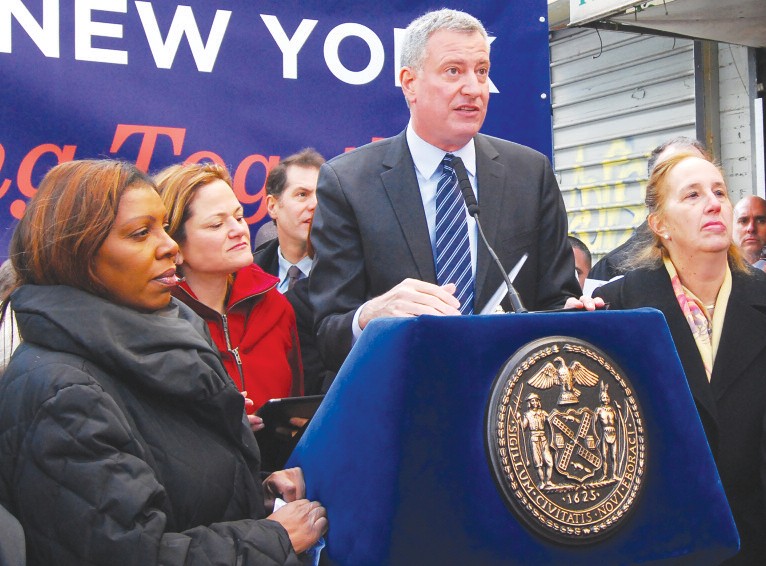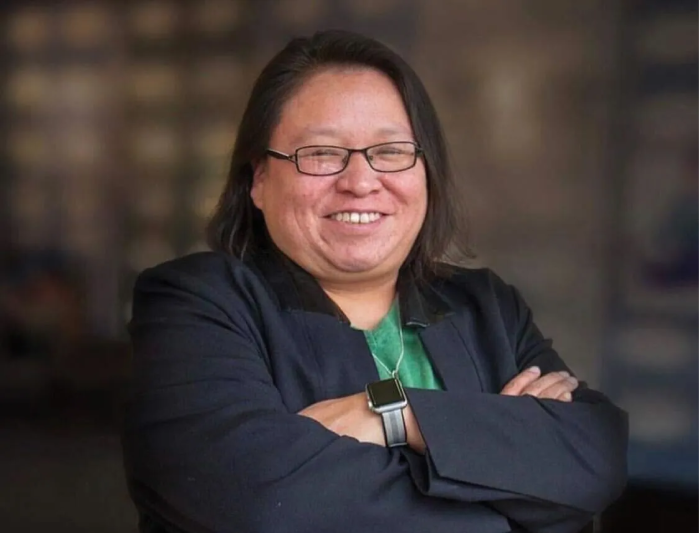Board 6 Scrutinizes F.H. Traffic Changes
Newly implemented traffic regulations around Forest Hills was the focus of Community Board 6′s meeting last Wednesday, Nov. 12, at the Kew Gardens Community Center.

Residents were given the opportunity to address both board members and Department of Transportation (DOT) officials with regard to the controversial ban on left turns from Yellowstone Boulevard onto westbound Queens Boulevard in Forest Hills.
Board 6 Chairperson Joseph Hennessy underscored the importance of the session: “Even though, realistically, it’s happening right now, we still have to be given the opportunity to voice our opinion. So, we will listen to both sides tonight.”
DOT Queens Borough Commissioner Dalila Hall and her staff were on hand to listen and respond to questions posed by residents and the community board itself.
“The changes that we made at Queens Boulevard and Yellowstone are the result of concerns that have been raised to us over time from many sectors of the community,” stated Hall. She cited ongoing safety issues at the intersection as the primary motivation for the change.
“We heard from the local 112th Precinct that this was one of their top accident-prone locations,” Hall explained. “After looking at the history of crashes there, we found that 50 percent of vehicle to pedestrian crashes were the result of left hand turns.”
P.O. Rich Zapata, 112th Precinct traffic safety officer, agreed with Hall: “As of 2009, this intersection has been the number one problematic collision prone location within the precinct confines.”
According to Zapata, officers from the 112th Precinct conducted an on-site visit with DOT engineers back in June 2013. They studied and observed traffic conditions firsthand, as well as analyzed collision data.
“Twenty percent of vehicle to vehicle crashes and injuries at this location were also due to left turns,” Hall stated, “That’s almost three times the rate of left turn crashes for all of Queens.”
According to Hall, the shape of the roadway may be partly to blame.
“It’s an oddly shaped intersection,” she stated. Hall explained that the DOT has successfully reduced accidents at similar intersections along Queens Boulevard. In 2004, the DOT implemented a ban on westbound left turns onto Queens Boulevard from 51st Avenue.
“After people had a period of adjustment to the changes, we saw a 67 percent reduction in car to pedestrian crashes,” Hall explained, “as well as a 58 percent reduction in motor vehicle crashes at that intersection.”
Project Managers Nicole Altmix and Kessia De Leo from the DOT’s Research Implementation and Safety Group joined Hall at the podium. According to Hall, both Altmix and De Leo studied conditions at the Yellowstone intersection, developed the plan and managed the process for making changes on the ground.
Hall reassured the public that her team remains open to residents’ opinions and suggestions.
“We do know that people have raised concerns, and we want to listen to what you’re saying,” she added. “Our goal here tonight is to be listeners and to understand what you’re seeing in the field.”
Shifting the problem
One resident observed an increase in traffic tie-ups and unsafe conditions near J.H.S. 190, Russell Sage Junior High School.
“The Queens Boulevard danger site shifted to Austin Street and Yellowstone,” he explained.
Forest Hills resident Alexa Weitzman observed similar conditions outside her residence across Queens Boulevard, on the corner of Yellowstone Boulevard and 69th Road. According to Weitzman, vehicles that can no longer make the left turn onto westbound Queens Boulevard have now been rerouted to her block, creating a bottleneck situation.
“People forced to go straight on Yellowstone Boulevard are forced to make a left turn onto 69th Road, which is a tiny, little road,” she explained.
Weitzman went on to cite quality of life issues, such as blocked intersections and continuous horn honking outside her building, as areas of concern.
“During high volume traffic hours, like the morning and evening rush, Yellowstone Boulevard is backed up well past 69th Road,” she stated. Weitzman explained that she is generally in favor of the left turn ban, but feels that more needs to be done in conjunction with the change.
“I think there has to be a more overarching study,” she added. Weitzman also suggested the creation of wider crosswalks and additional barricades.
Carolyn Harrs, Weitzman’s neighbor and fellow Mayflower building resident, echoed many of these concerns. “I almost got hit trying to cross my little corner there because it’s so difficult for cars to make that left onto 69th Road,” she explained.
Harrs questioned whether left turning lanes and arrows would be more effective at the problematic intersections.
Board 6 Transportation Committee member Peter Beadle weighed in on the matter. Like Harrs, Beadle also inquired about the creation of left turnings and signals. He also advocated for a possible change in traffic light patterns to accommodate turning vehicles while allowing for a better flow of traffic.
Beadle also suggested the installation of way-finding signs to help familiarize non-local drivers with the area and help them navigate northbound Yellowstone Boulevard once they traverse Queens Boulevard.
“We have a lot of people coming down Yellowstone that are not locals,” Beadle explained, “and so all they know is that they have to get back onto Queens Boulevard and go left.”
Like many residents, Beadle voiced disappointment over the lack of public input prior to the implementation of the ban.
“I generally support banning left hand turns, but thought we were going to get more opportunity for feedback and some answers,” Beadle explained. “There was definitely a sense that there would be more presentations before the final rule, but that didn’t really seem to play out.”
Hennessy echoed the concerns of residents and asked Hall and the DOT to look into conditions at 69th Road and Yellowstone. “We need an outlet and we’re not getting it,” he stated.
Hall acknowledged the public’s apprehension over the changes and called the plan a “work in progress.” She asked residents to give the ban some timeandestimateda6to8month period of adjustment.
“Just in this brief time that we’ve implemented the changes, the precinct has seen a noticeable difference at this location,” she explained.
Zapata voiced his support of Hall and the ban. “No one likes change,” he stated, “but we have to consider the greater good it does.”
According to Hennessy, this issue will now be assigned to the Community Board 6 Transportation Committee. Hennessy hopes the committee will then come back with a recommendation for the entire board during next month’s December meeting.
Countdown clocks
Assemblyman Andrew Hevesi was also on hand to advocate for the creation of safety measures at intersections throughout Queens Boulevard. Hevesi expressed a need for “countdown clocks” along the boulevard similar to those in use in other parts of Queens which stagger time and allow pedestrians extra time to traverse busy intersections.
Hevesi also cited the need to audio prompts, or “tweeting” sounds, at crosswalks to help visually impaired pedestrians. The plan has already been implemented in Albany.
“These are two good ideas that I wish were mine,” Hevesi stated, “My office has reached out to the DOT on both.”
* * *
Community Board 6’s next meeting is scheduled to take place on Wednesday night, Dec. 10, at 7:45 p.m. at the Kew Gardens Community Center, located at 80-02 Kew Gardens Rd., Suite 202. For more information, call Board 6’s Forest Hills office at 1-718-263-9250.

































